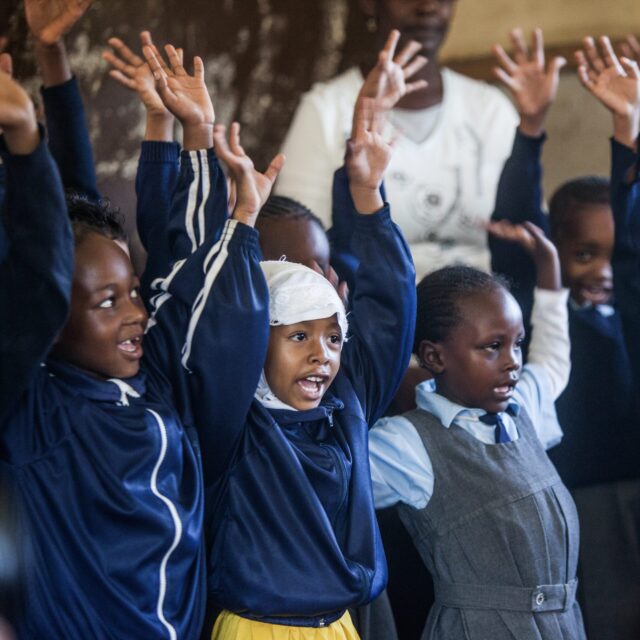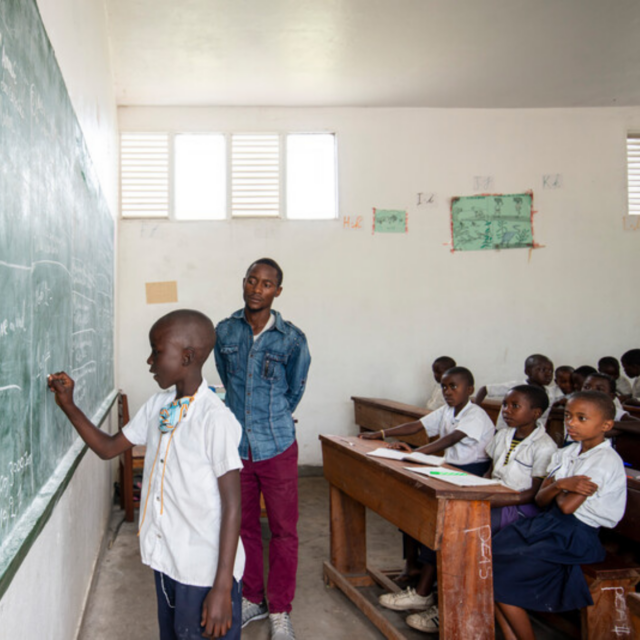As children across Africa return to school this week, they might find a very different landscape to the one they left behind before the pandemic. Classroom sizes in some schools will be smaller due to high dropout rates, especially among adolescent girls.
COVID-19 has shut an entire generation in Africa out of the education system. Millions of children in low- and middle-income African countries will not return to schools as they reopen due to a variety of reasons. That includes loss of family livelihoods during the pandemic, which has affected parents’ ability to pay school fees. In South Africa, an estimated 750,000 students dropped out of school during the first year of the pandemic. A study found that 10% of those interviewed said that at least one child in their household did not returned to school in 2021.
A study in Kenya found that 16% of girls and 8% of boys did not return to school in 2021 after nearly a year of school closures. Ruth Kagia, the deputy chief of staff in the Office of the President, said that the negative consequences of high dropout rates will be felt for decades: “The pandemic is deepening pre-existing inequalities, exposing vulnerabilities in social, education and economic systems which are in turn amplifying the impacts of the pandemic.”
In some countries, girls who were out of school due to closures were tasked with helping with household chores. Many parents, especially those who place a low value on girls’ education, might be tempted to keep their daughters at home after schools reopen this month.
Deepening disparities
Studies conducted in 2020 found that school closures sent about 90% of students out of school globally; of these, 800 million were girls. Millions of children who did not have access to e-learning or home schooling – both boys and girls – received little or no education in the past two years. Some schools in Africa are only fully reopening now after a hiatus of nearly two years, including Uganda.
Such lengthy school closures are likely to deepen disparities between those who could continue with their education with home schooling or e-learning and those who couldn’t. Most children who did not receive any education during closures will likely have to repeat classes to catch up, which means they will lag behind their peers. Some might drop out of school altogether. Huge gaps in learning, says Conrad Hughes, a research associate at the University of Geneva, also create “fossilised errors or gaps.”
“It’s like a house being built without foundations,” he explained.
Some schools in Kenya did better than others in retaining both boys and girls in school. William Wambugu, the head teacher at Ndaragua Primary School in Nyahururu, Kenya, said that when the pandemic hit, the school already had a counselling programme for students, which provides psycho-social support to girls. “I believe this is the reason none of our girls got pregnant, and every student returned this year,” he said.
Teen pregnancies, early marriages, and sexual violence
Wambugu’s school is among the lucky ones. Teen pregnancy and early marriages are disrupting education for girls across Africa. South Africa’s Gauteng province witnessed a 60% increase in teenage pregnancies since the start of the pandemic. This has been attributed to a variety of factors, including lack of access to sex education among girls, reduced access to contraceptives during lockdowns, and sexual violence.
A rise in unwanted pregnancies during a public health crisis is not a new phenomenon. During the Ebola outbreak in West Africa in 2014, teenage pregnancies surged, with Sierra Leone experiencing a 65% increase in pregnancies among adolescent girls. Many of these pregnant girls were subsequently banned from going back to school.
Kenya’s Ministry of Health recorded 328,000 teenage pregnancies in the first year of the pandemic. Bit even before the pandemic, Kenya had among the highest teen pregnancy rates in the world: Two out of 10 girls aged between 15 and 19 years old were pregnant or already had a child.
“In some countries, we’re seeing greater learning losses among girls and an increase in their risk of facing child labour, gender-based violence, early marriage, and pregnancy,” says Peter Jenkins, the director of education at UNICEF.
Girls become more vulnerable to sexual abuse and exploitation during school closures, as they no longer have the protection that schools offer. About three-quarters of the adolescent girls interviewed in the Kenya study said they had experienced or witnessed more sexual, physical, or emotional abuse during school closures. They attributed this to tensions arising from loss of family income and restricted movement during lockdowns, or unwanted pregnancies. Official data from Kenya show that sexual abuse of minors rose dramatically in 2020, from 5,397 reported cases in 2019 to 6,801 in 2020, a 26% increase.
Some parents are also marrying off girls who are out of school. Many parents who lost their livelihoods during the pandemic got their school-age daughters married in exchange for dowry. In Kenya, 16% of girls aged 15 to 19 who got married during the first year of the pandemic blamed COVID-19 and felt they would not have been married off otherwise. In March 2021, UNICEF warned that 10 million girls worldwide were at risk of child marriage due to COVID-19. Ethiopia and Nigeria are among those countries with the highest child marriage rates in Africa.
“Shuttered schools, isolation from friends and support networks, and rising poverty have added fuel to a fire [child marriages] the world was already struggling to put out,” stated Henrietta Fore, UNICEF’s executive director.
The long-term economic costs
Countless studies have shown a strong correlation between years of schooling and income. Loss of education and skills in today’s students will have long-term economic impacts. Countries most negatively affected by high dropout rates will suffer a significant loss of skills and education among their youthful populations. They will also find it harder to achieve the UN Sustainable Development Goal of ensuring inclusive and equitable quality education and promoting lifelong opportunities for all.
The economic cost of these disruptions worldwide will be monumental, according to a new World Bank-UNESCO-UNICEF report. “This generation of students now risks losing $17 trillion in lifetime earnings in present value, or about 14 percent of today’s global GDP, as a result of COVID-19 pandemic-related school closures,” says the report.



